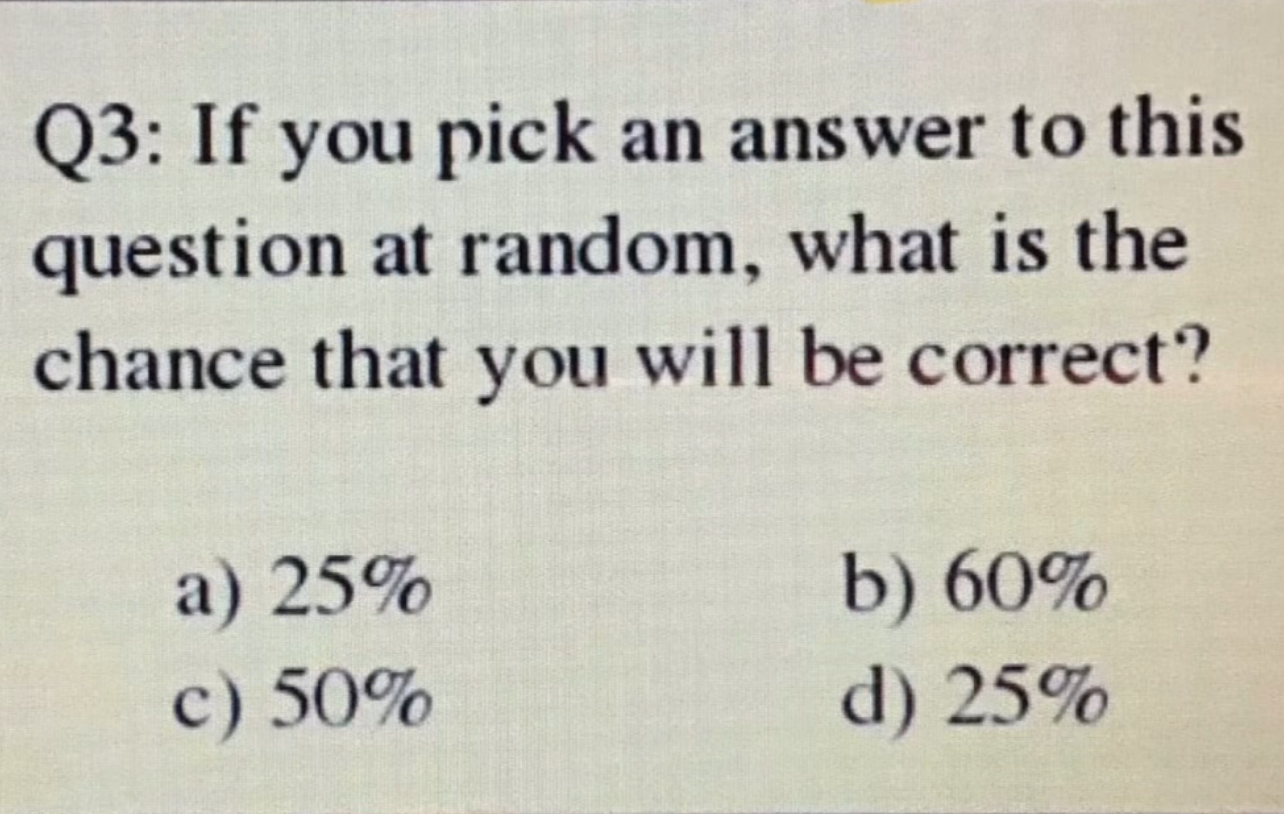This only produces a paradox if you fall for the usual fallacy that "at random" necessarily means "with uniform probability".
For example, I would pick an answer at random by rolling a fair cubic die and picking a) if it rolls a 1, b) on a 2, d) on a 3 or c) otherwise so for me the answer is c) 50%.
However, as it specifies that you are to pick at random the existence, uniqueness and value of the correct answer depends on the specific distribution you choose.

